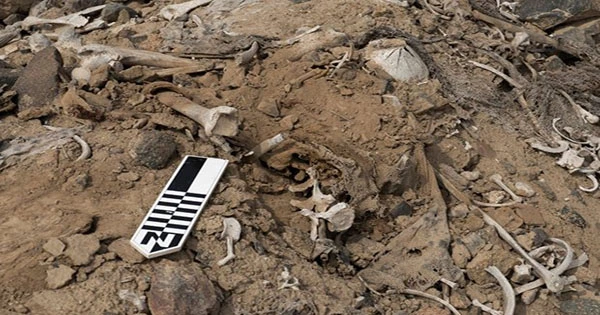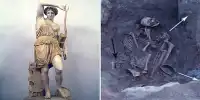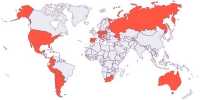Researchers discovered 192 human spines woven onto reed posts in 500-year-old burials in southern Peru. The authors of a paper published in the journal Antiquity describe this amazing discovery as “perhaps providing a mechanism for indigenous people to repair dead bodies injured by European grave thieves.”
The skewered spines were discovered in grave sites in the Chincha Valley, where famine and disease epidemics killed the local community following the advent of Europeans. According to the researchers, the Chincha population fell from over 30,000 families in 1533 to only 979 households half a century later, and many of the dead would have been ritually buried alongside valuable gold objects.
All of the vertebrae-on-posts were dated between 1450 and 1650 CE, a time when European colonialists plundered and destroyed a huge number of indigenous burials in the area. “Looting was primarily meant to remove gold and silver grave goods and would have gone hand in hand with European efforts to destroy Indigenous religious rites and funerary customs,” research author Dr. Jacob Bongers said in a statement.
“These’vertebrae-on-posts’ were probably built to reassemble the deceased in response to grave robbery,” he said, adding that the strangely arranged human spines “reflect a direct, ritualized, and Indigenous response to European colonialism.” This explanation is supported by radiocarbon dating, which indicates that the threading of these vertebrae onto reed posts took place after the first burial, and archaeological evidence suggests that local indigenous societies were concerned about the integrity of deceased bodies.
For example, “non-bloody” killing tactics such as “strangulation or live burial” were frequently used in Incan child sacrifices, according to the authors, “supposedly on the belief that nothing ‘incomplete’ should be offered [as a sacrifice] to the sun.” They also point out that the Chinchorro people, who lived many millennia ago in the adjacent Atacama Desert, had a similar interest in keeping dead corpses intact and created the world’s first known mummification procedures.
The Chinchorro often put wooden sticks into the vertebrae of these mummies to keep them stiff. The authors of the study suggest that the vertebrae-on-posts discovered in the Chincha Valley indicate a continuation of this practice of conserving the integrity of dead bodies, and that it was carried out in order to reassemble corpses that had been looted. More broadly, they claim that such behaviors resemble ancient South American tribes’ funerary traditions and beliefs, in which “body parts continued to live social lives long after biological death.”














